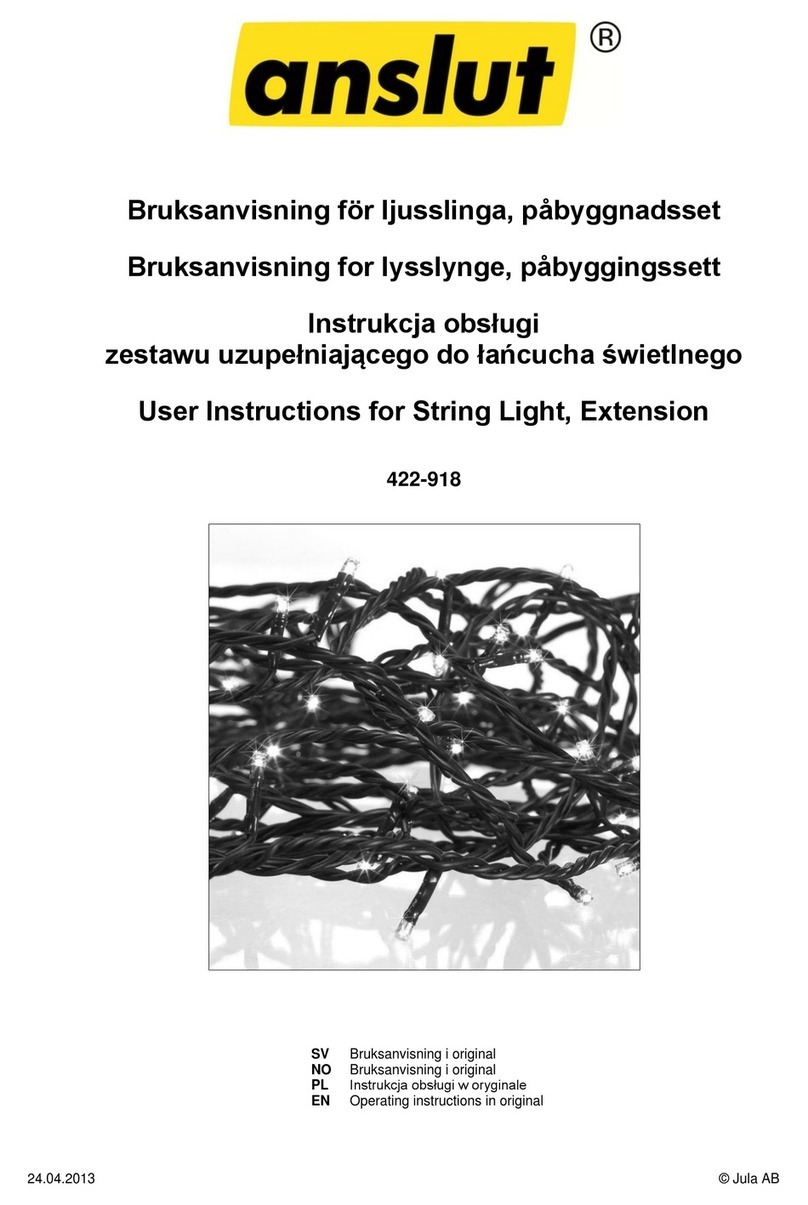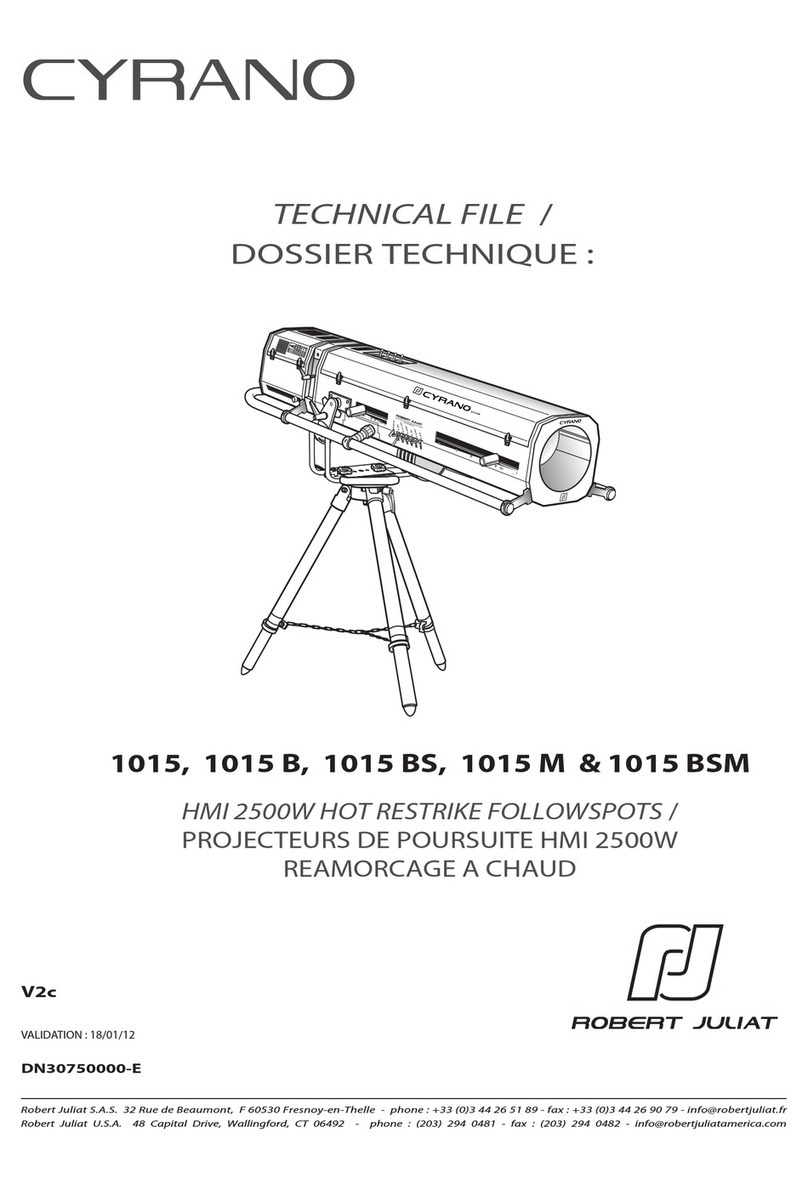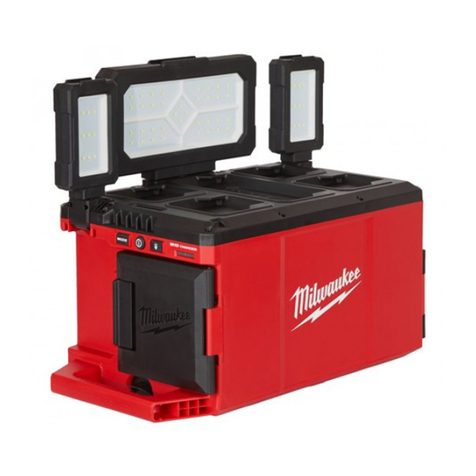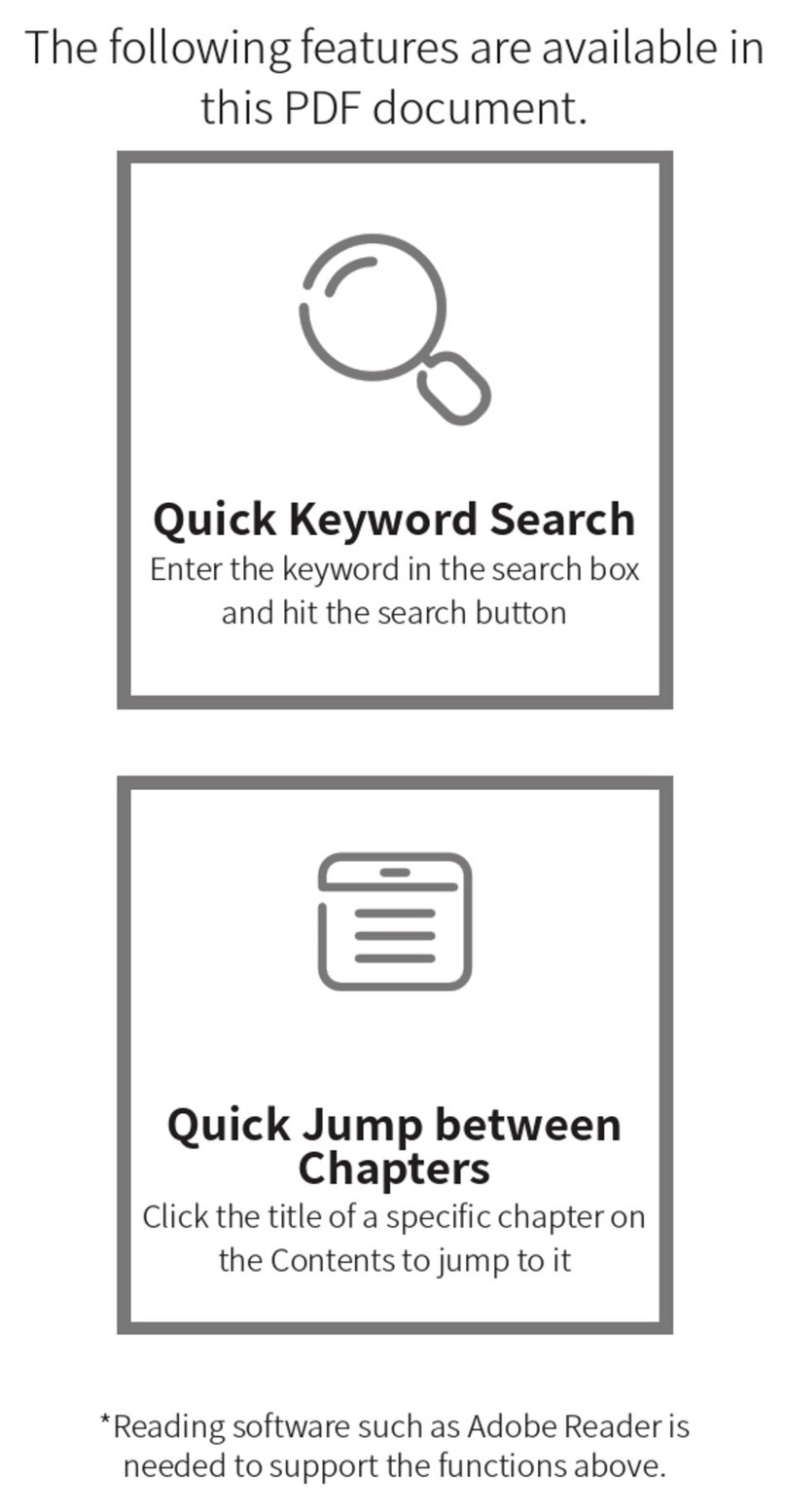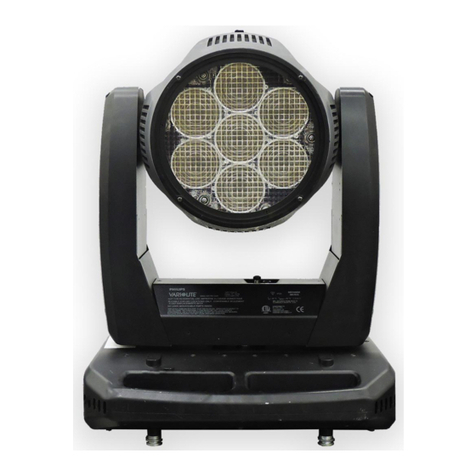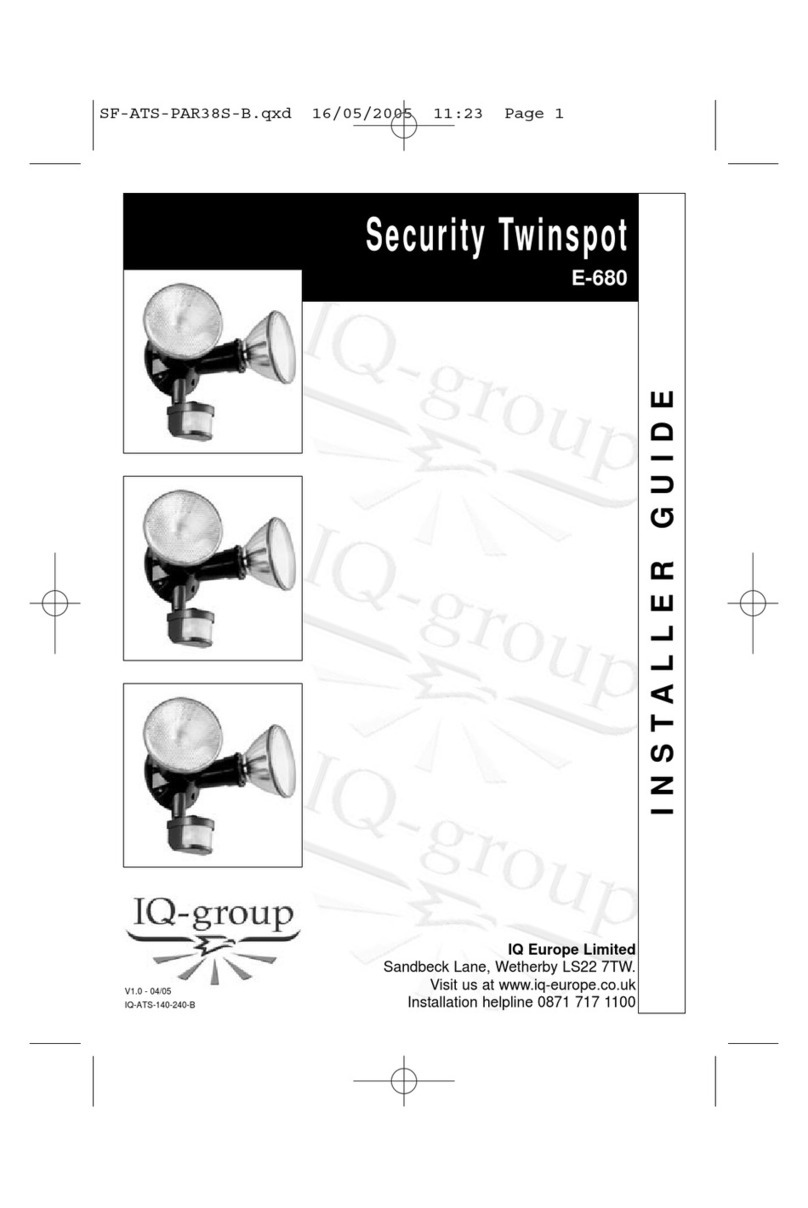ELEMENTAL OHM EARTHLIGHT Instruction Manual

FREQUENTLY ASKED QUESTIONS
Compare Soils Monitor Biome Monitor Moisture Build Soils
EARTHLIGHT
ELEMENTAL OHM LLC
TM
TM
TM

Q: What is Earthlight™?
It’s a versatile and intuitive tool that indicates the quality of the living biome of soil, while helping you measure moisture con-
tent. Once setup, healthy living soil that is properly watered will produce a charge, illuminating the device’s green LED. Poor
soil, even if watered will not produce a charge.
Q: Do the metal parts of Earthlight™ corrode in my soil and harm my plants?
The copper cylinder will not oxidize in your soil or interact with the soil in any way. The magnesium rod will last many years if
you are using Earthlight™ for eld testing or spot checking plants and soil. If you are using Earthlight™ as a long-term installa-
tion in a pot or bed, the magnesium will oxidize very slowly and will usually last about 4 months. The magnesium oxide enters
the soil and works as a mildly bioavailable magnesium supplement that will not overwhelm your plant or soil. Magnesium is a
vital nutrient for photosynthesis to occur and Earhlight™ when setup long-term will provide a time-release magnesium boost to
your living soil and plants, while extra magnesium oxide will wash out with watering.
Q: What makes Earthlight™ different from other moisture meters?
Earthlight™ provides vital data relating to the soil’s health and biome which would otherwise only be available via expensive
lab tests. Earthlight takes the guesswork out of living soil and empowers the user by opening up the invisible world of soil, and
acts as a means of communication so that your soil and plants may relay useful information to the user. Moisture meters only
provide information about water content. Earthlight™ can be a crucial part of any living soil system, acting as biome indicator,
or used as a eld test to compare various soil sources, or to nd active soils out in the wild to make your own homemade liv-
ing soil amendments. To put it simply, Earthlight™ provides lab-level data to the user while being so simple to use that a child
can use it. It’s a total game-changer.
Q: Can I use Earthlight™ in any soil and with any plants?
Yes you can. You can always use it for spot checking and eld testing of soil. Just make sure to wet the soil sample after you
push it into the cylinder to activate it. It will work in long-term setup with almost any type of plant except plants that require
very acidic soils such as Blueberries, or plants that acidify soil such as Juniper, Pine, or Spruce. Do not use long-term in soil
that is too “hot” with manure, chicken poop or compost that has not yet broken down. Many soils such as Fox Farm’s line are
marketed as safe but they require additional time to break down and come “hot” out of the bag, which is not good for young
plants or Earthlight™. Pro-Mix’s line of soil with Mycorrhizae is a better choice right out of the bag.
Q: Can I use any water with Earthlight™?
What is good for Earthlight™ is also good for your plants. Water too high in minerals or suspended bicarbonates, such as well
water will coat the roots of your plant preventing the uptake of nutrients. The same water will coat Earthlight’s magnesium rod
with minerals and prevent it from making contact with the soil, eventually preventing it from functioning properly. Chlorinated
“city” water or water with other harsh chemicals added to it will kill your soil microbes. Just consider the fact that chlorinated
water cannot be used for making bread, as it will kill yeasts. This water will hamper the success of your soil biome, and Earth-
light™ will tell you that it is doing so by not functioning. Chlorinated water will also prematurely degrade your metal rod. Please
use rainwater or spring water with Earthlight™; or reverse osmosis ltered water as a last resort.
Q: How does Earthlight™ work?
Earthlight™ has no batteries. It’s a novel, hybrid microbial fuel cell with a circuit that is very sensitive to low voltages. It
has two methods of function. First, if your soil has high enough electrical conductivity (EC), as the magnesium anode slowly
oxidizes, it will be able to send electrons to the copper cathode via galvanic action like a regular battery. This function will work
in short increments, lighting the LED briey. It is not enough to provide sustained voltage to light the LED, so another pow-
er source must be present in order to keep the LED lit. The sustained power for Earthlight™, especially in long-term setup,
comes from common exoelectrogenic bacteria which emit electrons as they break down nutrients in the soil. These are com-
monly species of Geobacter, Shewanella, Geopsychrobacter and Geothrix. The surface area and materials of the anode and
cathode are designed in such a way that it can pick up these errant electrons in the soil, just like a microbial fuel cell can.
1

Q: Is Earthlight™ toxic in any way?
Not at all. The metals chosen are safe for plants, humans, animals and of course soil! The metals are actually important in
healthy soil and are used as common soil nutrients regularly on farms and in gardens around the world.
Q: is Earthlight™ dangerous to use?
No, not at all. You cannot get shocked or electrocuted at all by Earthlight™ no matter how hard you try. It will only generate
.75-1.5v and very low current which you would never feel even working with it with wet hands.
Q: Can a child use Earthlight™?
Yes, it is designed to be used by everyone, kids and adults alike and anyone who likes to play in the soil and discover. The
unit contains a few small parts and is not recommended for very young children (8 years or younger).
Q: Can Earthlight™ be used outdoors?
Yes, it is built ruggedly and can withstand direct sunlight and high temperatures. It is also water resistant against rain and
regular waterings. You can always spot check or eld test soil outdoors. With long-term setup outdoors, you may experience
mixed results compared to indoors due to factors such as temperature uctuation, variations in soil quality, PH and mineral
content. It is not recommended to leave it setup long-term in unknown soils due to extra risk of accelerated magnesium rod
degradation.
Q: Is Earthlight™ waterproof?
It is water-resistant but not designed to be submerged in water. However you may rinse all parts of it briey for cleaning with
little to no risk of damaging the components.
Q: How do I know that Earthlight™ is working?
Earthlight™ will illuminate brightly in healthy soil that is properly watered. If it doesn’t work in the long-term conguration, try
the short-term conguration. Your soil may not have a healthy enough biome to light Earthlight™ properly. Make sure that the
magnesium rod is not contacting the copper cylinder. This will create a short that will prevent the unit from working at all.
Q: If Earthlight™ is sensitive to the conductivity of minerals in my water and
soil, couldn’t that cause a false positive reading for its biome detecting
ability?
Yes, however the minerals’ ability to keep Earthlight™ operating are minimal. In a glass of “hard” water for example, the
device will light for a short period of time but the effect will not last. A proper biome will light the device very brightly and for an
extended period of time, as electrons are constantly passing through the soil, generated by your soil microbes. In very healthy
and active planting mediums, you should be able to have a decent-sized gap between the cylinder and the rod in a long-term
setup and still get an illuminated LED.
Q: Are there different ways to set up Earthlight™?
Yes. There is a short-term eld test/spot check conguration where the rod is inserted into the soil sample within the copper
cylinder. Make sure to wet the soil to activate your sample if it is dry. There is also a long-term conguration for great living
soils, where Earthlight™ will keep tabs on your biome and water content for many months. In this conguration the magne-
sium rod is placed directly side-by-side the copper cylinder.
Q: Is Earthlight™ portable?
Yes. It is designed to be placed in a compact “stowaway mode,” where it is easy to put in a pocket or take with you to the eld.
You can even save and leave the installation stake behind to make it even more portable and easy for eld testing.
2

Q: Does Earthlight™ require any maintenance?
Yes. When using primarily for spot checking or eld testing, you may need to very occasionally clean off the magnesium rod
to rid it of oxides or other discolorations which may occur over time, preventing it from conducting properly, perhaps hindering
the performance of the device. When set up for long-term monitoring, the magnesium rod will require cleaning after about the
rst month of continual operation. This is simple to do and requires no tools other than water (to prevent dust) and an abrasive
metal object to scrape off magnesium oxide and other mineral buildups. This cleaning process should be repeated as nec-
essary when the device’s sensitivity is lower than normal. The device will tell you it’s time for a cleaning when you water your
plant and the LED fails to light or dims much quicker than normal. Keep the rod clean so Earthlight™ does not give you a false
reading. After 4 months of continual operation, it is probably a good time to replace your rod entirely. They are available in
3-packs at our shop at www.eohm.io/shop, which should last you a year of continual operation
Q: Is it easy to replace the magnesium rod?
Yes, it is extremely easy. Simply pull off the protective cap, hold the hex nut with one hand and with a Phillips head screw-
driver turn the screw counterclockwise and the wire connection will release. Wrap the wire between the washer and nut on
the new rod, hold the hex nut with one hand and turn the screw clockwise with a screwdriver to secure the wire connection.
Replace the cap, making sure that it makes a decent seal over the edge of the magnesium rod, protecting the insulated screw
connection. We sell 3-packs of replacement rods which should last a full calendar year of long-term setup with Earthlight™.
Q: My unit doesn’t appear to be working. How can I test it?
You can place Earthlight’s rod and cylinder into a glass of water with a spoonful of table salt. Make sure that the rod and
cylinder are not touching. A working unit will illuminate for a while in this conguration, and is a good test for determining if the
device functions properly. If It doesn’t work in this conguration, double check both wire connections and try again. Need be,
tighten any screws or nuts. If it works in this setup but not in the soil you are testing, soil quality is most certainly the culprit.
Make sure that you aren’t using chlorinated water. Always make sure that the rod and cylinder aren’t touching while operating.
Q: If my soil is poor according to Earthlight™, what can I use to improve it?
Earthlight™ is sensitive to living soils and soils with good EC (electrical conductivity). Very high EC can indicate a prevalence
of salts in the soil and can actually hinder the health of soil microbes while prematurely degrading the magnesium rod of the
device. Because of this, we recommend living soil amendments only, which create a sustainable source of electricity for Earth-
light™ as a bi-product of benecial microbes breaking down nutrients in the soil to be made bioavailable for your plant. Put
simply, what is good for Earthlight is good for your plants and soil.
We recommend biochar, composts, compost teas, bokashi, worm castings and homemade bokashi and JADAM microbial
solutions as effective sources of benecial soil microbes to populate your soil which Earthlight™ will respond well to. Be sure
to follow all manufacturer instructions carefully, as more does not mean better. Too much of these supplements in too high a
concentration can “burn” or kill your plant and destroy Earthlight’s magnesium rod. Blood meal may also be used to increase
your soil’s conductivity, but is not enough to improve the soil and make the unit work on its own.
If your soil is very poor but you absolutely must use Earthlight™ as a long-term moisture meter alone, dissolve two table-
spoons or less of epsom salt into warm or lukewarm water and wait for it to cool. Water your plants with this solution once a
month or less. Epsom salt works as a magnesium supplement for plants, so do not use it on plants that are magnesium sen-
sitive. Keep in mind this is “cheating,” and your plants and soil will improve greatly if you use the living soil amendments listed
above.
Q: I must have messed up my soil or used the device incorrectly because my
Magnesium rod is toast and my plants look terrible! What do I do now?
Check the PH of your soil. If it is too acidic, correct the PH with PH Up or PH Down. Lime will make the soil less acidic as
well and aluminum sulfate and sulfur will make it more acidic. Check it again. If you used too much compost or fertilizer, you
may need to cut your soil with more raw dirt that has not been amended. If you are unsure of what the problem is, start your
soil over. When your soil is all squared away and the PH is in a safe range for Earthlight™ (PH of 5.5 or lower), contact us at
Elemental Ohm and we will send you (1) courtesy magnesium rod free of charge if the purchase date of your unit was within
the same month and you can provide a picture of the failed rod. The next rod will have to be purchased as part of a 3-pack, as
we do not sell them individually. 3
Table of contents
Popular Lighting Equipment manuals by other brands

Sea & Sea
Sea & Sea YS-90DX instruction manual
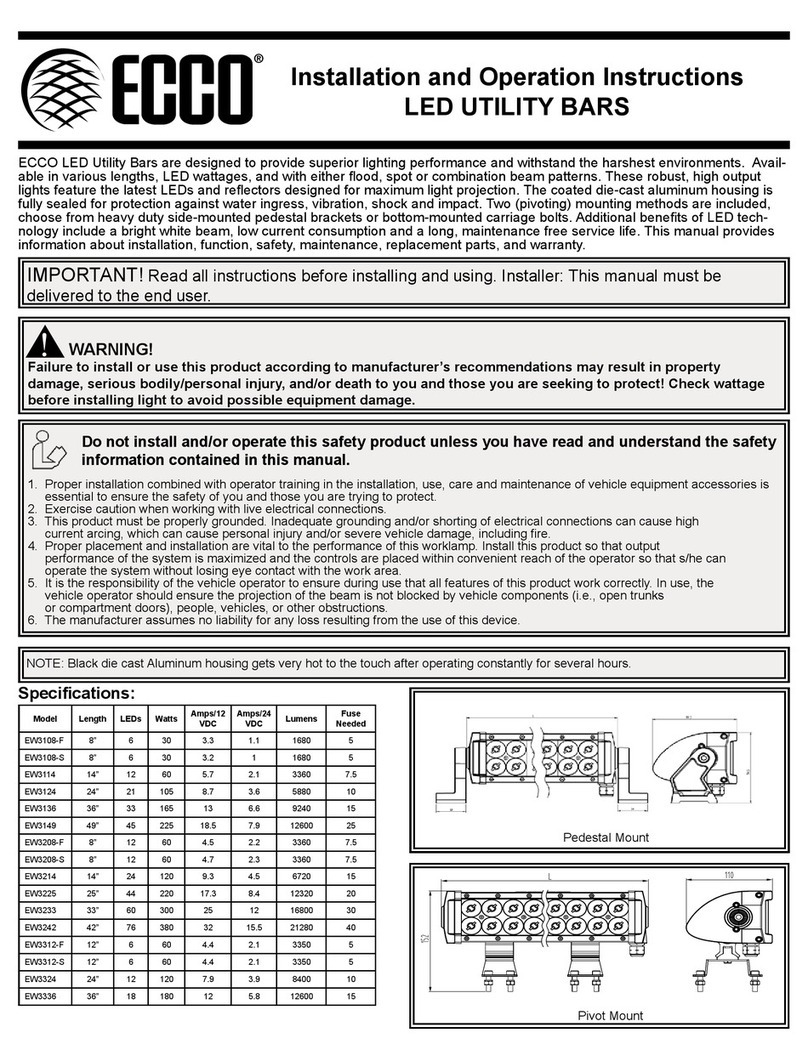
Ecco
Ecco EW3108-F Assembly, installation and operation instructions

Avlite
Avlite AV60 Installation & service manual
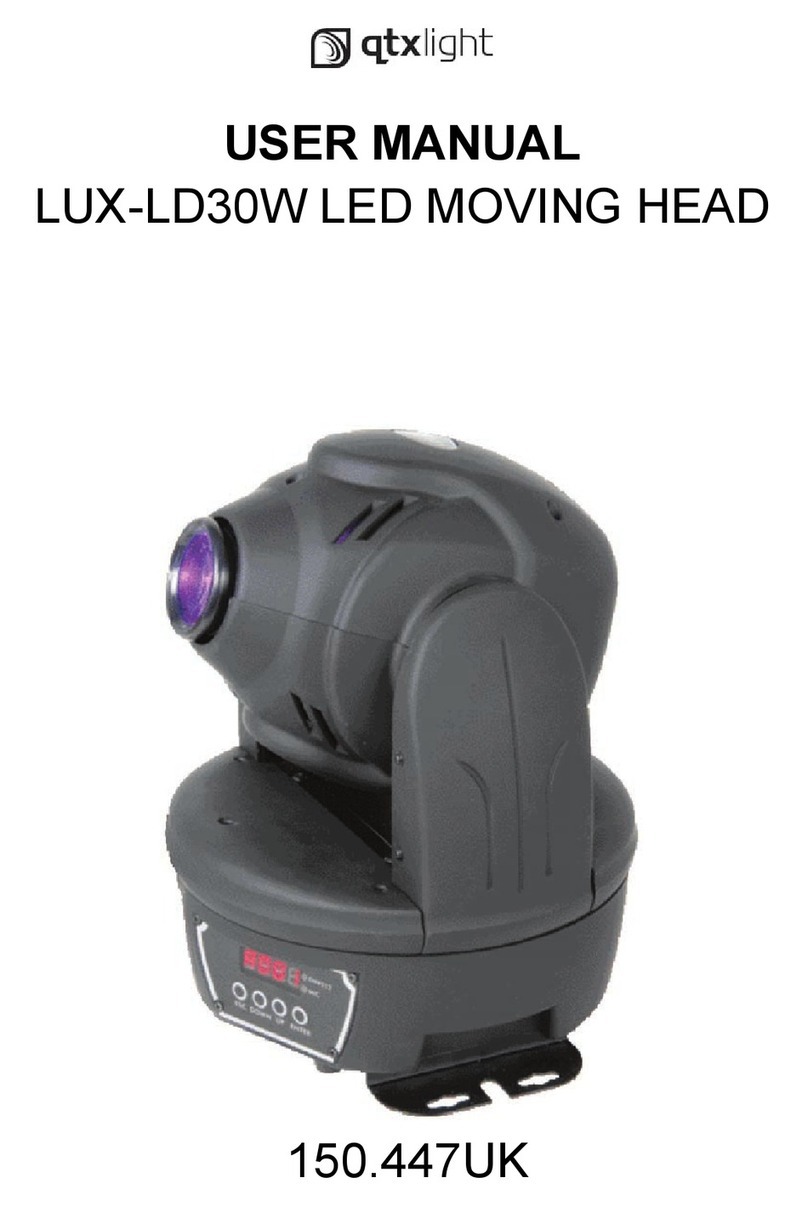
QTX Light
QTX Light LUX-LD30W user manual

Techno Signz
Techno Signz Digi Pilot Sign troubleshooting guide

Lightolier
Lightolier Lighting Systems CD7-11 Specification sheet
